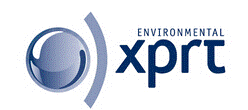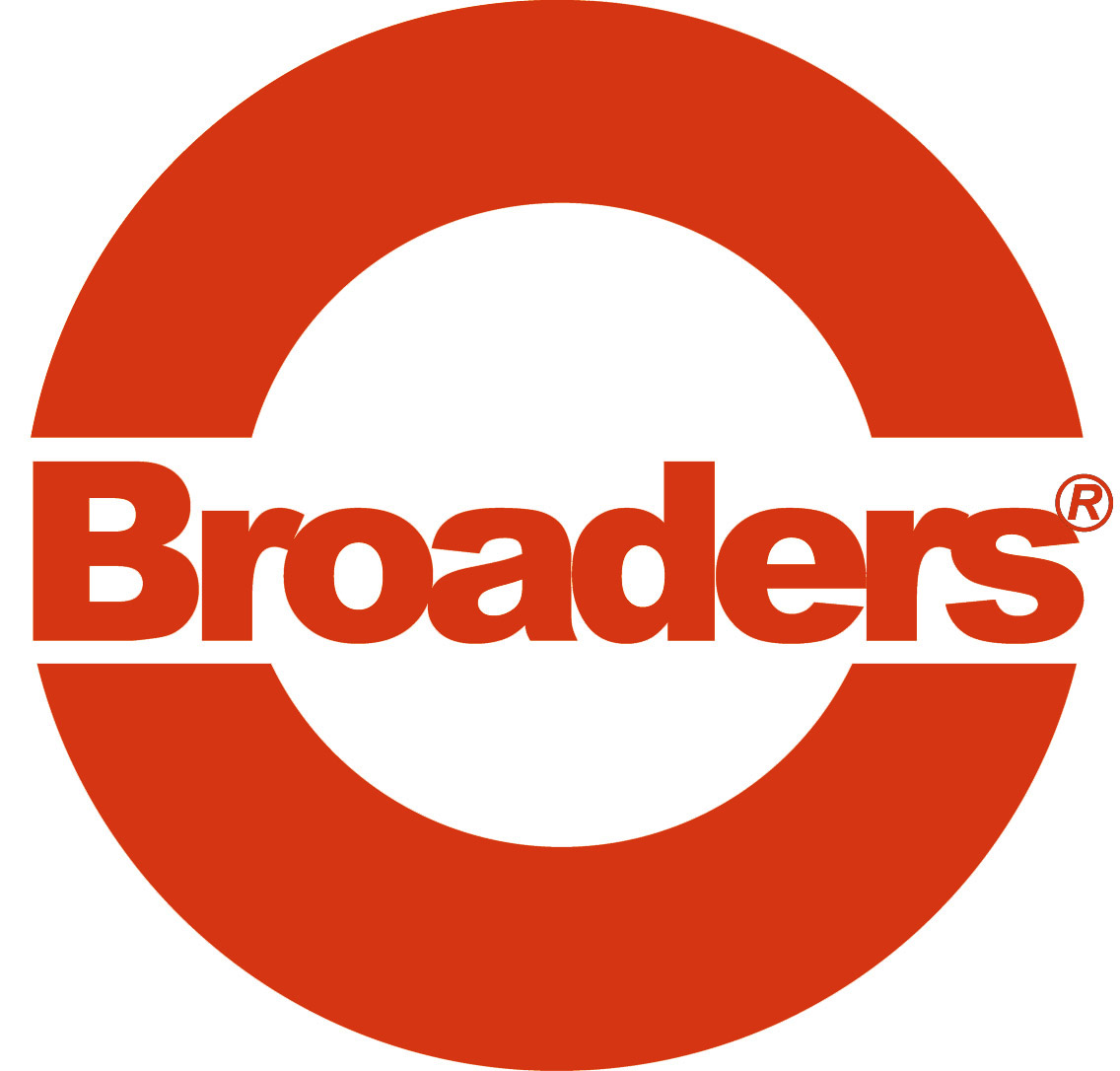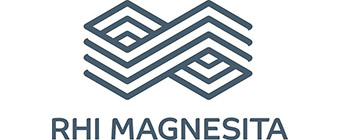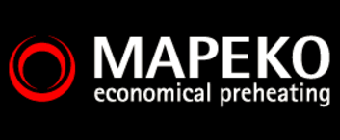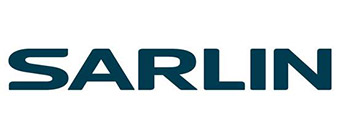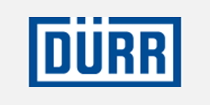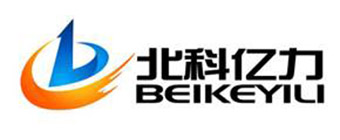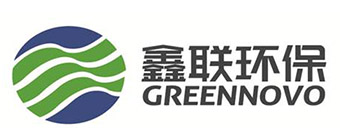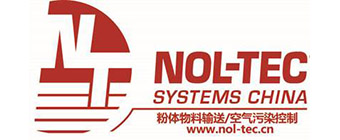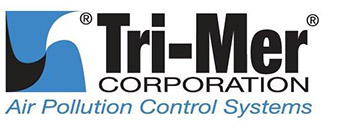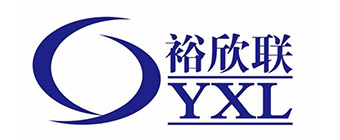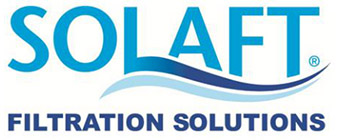Asia Green Glassmaking Plant Summit 2018 was successfully held on 9th May 2018 in Pullman Shanghai Skyway Hotel.
Asia Green Smart Steel Mill Summit 2019 Event Background
2017 is the year of China's steel industry industrial supply-side structural reform rapid growth.In particular, the government targeted eliminating substandard steel capacity as part of de-capacity efforts,the market supply and demand equilibrium pricing system restored,competition returns to be benign,price rose recoved.The de-capacity policy not only made the overcapacity of the steel industry mitigated,but also promted the industry profits sharp recovery,profits per ton reached up to nearly a thousand rmb in the first half year.The overall steel industry improvement is also the general trend.
On October 28, 2016, in order to implement the "Outline for the Thirteenth Five-Year Plan of the National Economic and Social Development of the People's Republic of China","Made in China 2025" and "Opinions of the State Council on Resolving Overcapacity in the Iron and Steel Industry",promote the steel industry restructuring and upgrading,MIIT issued "steel industry restructuring and upgrading plan (2016-2020).
The steel industry has always been a big energy consumer. Although the energy consumption per ton of steel in China's iron and steel enterprises has been declining in recent years, there are still problems of unreasonable energy use.According to the latest statistical data, although the energy consumption per ton of steel continues to decrease,the steel electricity consumption per tonne does not fall but rise,which becomes a bottleneck of restricting the the steel industry development.At present, China's attention to the energy saving of the steel industry has risen to unprecedented levels.
March 10, 2017, in order to implement the "Industrial Green Development Plan (2016-2020)", play energy-saving monitoring in promoting industrial energy-saving emission reduction and green development in an important role fully, The MIIT has formulated the "Key Work Plan for Industrial Energy Monitoring in 2017" on the basis of earnestly reviewing the 2016 national major industrial special energy-saving supervision work.Inspect the steel industry special monitoring of energy consumption first.According to the "Opinions of the State Council on Resolving Overcapacity in the Iron and Steel Industry" (Guo Fa [2016] No. 6) and the special work plan for joint enforcement of iron and steel in 2017,fully verify the implementation of energy consumption level and energy consumption level of the unit product of the iron and steel enterprises in 2016.In accordance with the "NDRC MIIT Notice on the use of price means to promote the steel industry and supply-side structural reform" (NDRC Price [2016] No. 2803) on the implementation of the iron and steel industry ladder price policy implementation Special supervision situation.
On November 16, 2017, in order to promote the popularization and application of energy-efficient technologies and equipment, the MIIT organized the "Recommended Catalog of National Industrial Energy-saving Technical Equipment (2017)" and the Application Guide and Case of National Industrial Energy-saving Technology (2017) ) ". Iron and steel industry-related energy-saving technology and equipment case was included.
On June 13, 2017, in order to implement the Law of the People's Republic of China on Environmental Protection and the People's Republic of China on Prevention and Control of Air Pollution,complete the standards for the air pollutants emissions, the MEP organized and formulated the "Iron and Steel Sintering, Pelletizing Industry Air Pollution Emission Standards "and other 20 national pollutant emission standards amendment list,the iron and steel industry special air pollutant emission limits significantly increased.The particulate matter from Sintering machine and pelletizing equipment,SO2 and Nox limits were adjusted to 20 mg/m3, 50mg/m3,100 mg/m3,compared with the original standard (40,180,300 mg/m3 respectively), there is a significant improvement,
the new special air pollutant emission limit will be implemented on June 1, 2018 in Beijing-Tianjin-Hebei "2 + 26" City.This means that the metallurgical industry is about to enter the era of ultra-clean emissions,both a challenge and an opportunity.According to the statistics of "2015 China's Environment Bulletin",the area of iron and steel sintering machines with desulphurization facilities in China reaches 88%. The main space for future emission abatement is from the facilities for dust removal and desulphurization retrofitting and new denitrification facilities building.At present, there are about 900 sinter machines in the country,with a sintering machine area of 116,000 m2.Assuming 40% of the capital near "2 + 26" cities in Beijing, Tianjin and Hebei, and retrofitting cost was 50% of the initial investment, the corresponding market is about 13 billion RMB.
The draft put forward the? emission control measures for the steel industry requirements for the first time,requiring new projects? emission control measures to be implemented from the date of the issuance of a single amendment.Existing corporate? emission control requirements be to be implemented from January 1, 2019,air pollution transmission channel cities were implemented since October 1, 2017 in Beijing-Tianjin-Hebei.Beijing, Tianjin, Hebei Province air pollution transmission channel cities are the recent environmental inspected "2+26"cities,including Shijiazhuang, Tangshan, Langfang, Baoding, Cangzhou, Hengshui, Xingtai, Handan, Taiyuan Shanxi Province, Yangquan , Changzhi, Jincheng, Shandong Province Jinan,Zibo, Jining, Dezhou, Liaocheng, Binzhou, Heze, Henan Province Zhengzhou, Kaifeng, Anyang, Hebi, Xinxiang, Jiaozuo, Puyang.There are about 167 steel enterprises in
"2 + 26" cities, where the steel production capacity of the four provinces accounts for 50% of the national total, and the total output of steel accounts for
40% of the national total.The output of crude steel in Tangshan, Handan, Shijiazhuang and Anyang cities accounted for 15% of the national crude steel, and the Ministry of Environmental Protection requested a limit of 50% in the above four cities.
On September 29, 2016, Hebei Provincial Department of Environmental Protection issued the "Notice on Execution of Specific Emission Limit of Air Pollutants in Hebei Iron and Steel Industry." According to the announcement, as per the relevant regulations, on the basis of implementing the "Emission Standard of Air Pollutants for Iron and Steel Industry" in Hebei Province, the steel industry in the whole province will implement the special emission limits for national standards of air pollutants.
On December 19, 2017, the Henan Provincial Government released the 2018 Work Plan for Tough Battle of Air Pollution Prevention and Control (draft for comments) and publicly solicited opinions from the public. The draft put forward to promote the steel industry ultra-low emissions retrofitting comprehensively,complete the province's 24 iron and steel enterprises sintering process ultra-low emissions retrofitting by the end of October 2018.After that,the sintering flue gas emissions under the conditions of the reference oxygen content of 16%, particulate matter, SO2, Nox emissions concentrations were not higher than 20 mg/m3, 50 mg/m3,100 mg/m3.The iron and steel enterprises who achieve ultra-low emissions by the end of June willimplement green environmental dispatch,appropriately reduce the winter peak production time and stop limiting the proportion in 2018-2019.
On July 27, 2017, the MEP issued "Technical specification for application and issuance of pollutant permit iron and steel industry "(HJ 846-2017)",will comprehensively push forward the reform of the pollution discharge permit system in the steel industry,involved in iron and steel companies' air pollutants and water pollutants permit management. The steel industry module on the national pollution emission permit licence application platform is openedsimultaneously.The release of the "steel technical specifications" reflects the whole process of management and multi-pollutant synergies control.Localities can furtherrefine their management scope and requirements according to the basic state requirements.
It is estimated that by the end of 2018, the MEP will issue about more than 5,000 steel enterprises across the country, including about 650 steelmaking and ironmaking enterprises and over 4350 independent steel olling mills to complete the issuance of new pollution emission permits.
The issuance of the permit for the steel industry has different requirements for different regions of the country. Beijing, Tianjin, Hebei and the surrounding areas (2 + 26 cities), the Yangtze River Delta and the Pearl River Delta are required to complete before the end of 2017; the rest of the country
will be completed by the end of 2018.According to "Steel Technical Specifications", the key management implementation for the annual output of 500,000 tons and over cold-rolled enterprises,the implementation of simplified management for annual output less than 500,000 tons cold-rolled enterprises,and all independent hot-rolled enterprises.
Among the self-monitoring regulatory requirements, automatic monitoring is required for exhaust gas heat-treating furnaces. The all main emission exitpermissible require the installation of automatic monitoring facilities.Dispersed PM emissions from the four phases of raw material storage and transportation, sintering / pelletizing, ironmaking and steelmaking need to calculate allowable emissions, using the same calculation method as that of pollutants discharged from the general discharge of regular exhaust gases.
From February 2nd to 3rd, 2018, at the National Environmental Protection Work Conference in 2018, Minister of Environmental Protection Li Ganjie said China will formulate a three-year combat plan to win the blue sky defense war and start the ultra-low emission retrofitting of the steel industry in 2018. It is also necessary to introduce an implementation plan for air pollution prevention and control in key areas such as Beijing-Tianjin-Hebei and surrounding areas, the Yangtze River Delta and the Fen Wei field.
On May 7, 2018 China¡¯s Ministry of Ecology and Environment issued opinions on the ultra-low emission retrofitting plan for steel enterprises.The plan would require 480 million tonnes of annual capacity in the world¡¯s top steel producer to meet ultra-low emissions standards by 2020, the document issued by the Ministry of Ecology and Environment (MEE) said.An official at the MEE confirmed the authenticity of the document, which said the emissions target would rise to 900 million tonnes by 2025.China produced 832 million tonnes of steel last year, compared to a production capacity of about 950 million tonnes.The draft set a 2020 deadline for mills around the capital Beijing, the northern port city of Tianjin and Hebei province, the country¡¯s top steelmaking region, to meet the new standards.However, the Hebei cities of Tangshan and Handan, where hundreds of steel plants are located, may apply for an extension until 2022, the document said.It said these cities faced a ¡°heavy task to complete ultra-low emission upgrading¡±.Mills that completed the upgrading will receive preferential treatment on electricity rates and taxes, and face lower capacity restrictions during the winter, the draft said.Last winter, steel mills in 28 northern cities were ordered to cut as much as 50 percent of production capacity to reduce emissions.The draft plan is the latest move against major polluters in Beijing¡¯s anti-smog campaign, which aims to cut emissions of damaging PM2.5 air particles so small they can pass through humans¡¯ lungs and affect other organs.The new targets will require steel mills to install more filtering and dust extraction equipment and use a higher grade of raw materials to curb emissions of sulphur dioxide, nitrogen oxides and other particulate matter.Profit margins for rebar touched 608 yuan ($95.61) a tonne in April, up more than 40 percent compared with a month ago, Mysteel data showed, while Jefferies had estimated rebar margins to hit a 10-year high of $134 per tonne.
According to research reports, the overall market for ultra-low emission retrofitting in the steel industry exceeds 80 billion rmb. Measured by investment required for lower emission standards, the market for the steel flue gas transformation is 43.6 billion rmb, 9.1 billion rmb and 29.1 billion rmb, respectively, in the period of 2018 to 2020, 2020 to 2022, and 2022 to 2025.
Indian Govrnment assured all possible support to green steel production.
Iron & steel industry in India are covered under the Environment Protection Act (EPA) as well as Environment Protection Rules & Regulations enacted & published by Ministry of Environment & Forest (MoEF&CC). At the beginning, the entrepreneurs are required to obtain statutory clearances from the Union/State Governments required under the EPA for setting up of any new iron & steel plants or its substantial expansion. Further, the steel companies are required to install specified pollution control equipments/facilities and also operate well within the prescribed Standards/Norms in respect of air, water and noise pollutions as also solid waste generation & utilization. These are monitored by Central/State Pollution Control Boards. MOS helps & facilitates formulation/amendment of Norms and standards.
Energy consumption in most of the integrated steel plants in India is generally high at 6-6.5 Giga Calorie per tonne of crude steel as compared to 4.5-5.0 in steel plants abroad. The higher rate of energy consumption is mainly due to obsolete technologies including problems in retrofitting modern technologies in old plants, old shop floor & operating practices, poor quality of raw material viz. high ash coal/coke, high alumina iron ore etc. The energy consumption in steel plants is however, gradually reducing because of technological upgradation, utilisation of waste heats, use of better quality inputs, etc.
The Ministry of Steel, through various schemes and regulations, is facilitating reduction in energy consumption and emission of environment pollution in steel plants. Some of the steps /initiatives being taken by the Ministry of Steel through various forums and mechanisms are:Steps/ Initiatives taken by the Government/ industry:Charter on Corporate Responsibility for Environment Protection (CREP) This is an initiative of Ministry of Environment & Forests/ Central Pollution Control Board (CPCB) in association with Ministry of Steel and the main/ major steel plants to reduce environment pollution, water consumption, energy consumption, solid waste & hazardous waste management etc as per mutually agreed targets with the purpose to go beyond the compliance of regulatory norms for prevention & control of pollution through various measures including waste minimization, in-plant process control & adoption of clean technologies. A National Task Force (NTF) has been formed for implementation of CREP recommendations. Ministry of Steel facilitates compliance of CREP action points in association with the steel plants. National Task Force (NTF) has recently been reconstituted
National Action Plan for Climate Change (NAPCC) has been launched in 2008 to address the Challenge at national level. NAPCC outlines 8 National Missions, one of them being the National Mission for Enhanced Energy Efficiency (NMEEE). Perform Achieve & Trade (PAT) is the flagship scheme under NMEEE. PAT is a market based mechanism through certifications of energy savings which could be traded. PAT has become effective from April 2012.Total Energy Consumption in India in 2010 was estimated at around 450 Million Tonnes of Oil equivalent (Mtoe) of which around 135 Mtoe i.e. approx 30% was accounted for by the Industrial Sector. The Energy Consumption in Iron and Steel Sector accounted for nearly 33.7 Mtoe i.e. 25% of the total energy consumption in the Industrial Sector.During PAT Cycle-I, (2012¨C2015), 67 Designated Consumers (DCs) with total Energy Consumption of 25.32 Million toe were covered which works out to 45% of total Energy Consumption in the Steel Sector ( 56 M toe).Under PAT Cycle-II (2016-19), 71 Designated Consumers in Iron Steel Sector have been notified by Ministry of Power. The share of Energy Consumption in respect of the 71 DCs works out to 72% of total energy consumption in the steel sector.
Promotion of Energy Efficiency in SME Sector:UNDP-GEF-MoS Project: ¡°Energy Efficiency in Steel Re-rolling Mills¡± (2004-2013):The project has been completed and implemented. It has facilitated low carbon technologies in 34 steel re-rolling mills (model units) to bring down energy consumption and reduce GHG emissions by 25-50%. This has helped in replication of the energy efficient technological interventions in many other steel re-rolling mills.
UNDP-MoS-AusAID Project: Up scaling Energy Efficient Production in Small Scale Steel Industry in India¡± (June 2013-June2016)
Aims to further replicate energy efficiency in steel re-rolling mills and expand the interventions to other SME Sector like induction furnaces. The project is completed covering 300 mini steel mills (inclusive of 5 Induction furnace units) are covered in Iind phase at the investment of 50 Crore from private sector against Rs. 20 crore of funding from Ministry of Steel, AusAid and UNDP.Third Phase:In the third phase for five years, 1100 units are proposed to be covered with approximate public funding of 108 crore from Ministry of Steel which will reduce 24 lakh tonnes CO2 per annum.Government of Japan through Ministry of Economy Trade & Industry provides funds i.e as Overseas Development Aid (ODA) under its Green Aid Plan (GAP) through Department of Economic Affairs in GOI for setting up of energy efficient, environment friendly projects known as Model Projects in various sectors including steel. These projects are routed through and managed by NEDO (New Energy & industrial technology Development Organisation), Japan. Ministry of Steel is coordinating the projects undertaken in the iron & steel sector. So far the following three projects have been commissioned, two at Tata Steel and one project at RINL.Further, two MoUs for two more Model Projects (i) Regenerative Burner System for reheating furnaces at Rourkela, SAIL and (ii) Energy Monitoring and Management System at ISP Burnpur, SAIL have been signed for implementation.The major wastes produced in integrated steel plants include BF Iron Slag Steel Melting Shop (SMS) Slag accounting for nearly more than half a ton for each ton of steel produced in ISPs. Most of the steel plants are utilising 100% of the iron slag produced (mostly in cement making and some portion as aggregate, both of which are permitted in BIS or IRC Standards Specifications) while others are closer to reach the 100% utilization.
To resolve these issues, Ministry of Steel has constituted a Task Force for promotion and utilization of Iron and Steel Slag. A meeting of the task force was held on 30th September, 2016 under the chairmanship of Joint Secretary (Steel), which was attended by all major steel plants in public & private sector and associations. In this meeting, all the issues related to slag were deliberated upon and action plans were evolved. Ministry of Steel has written to Indian Road Congress for development of codes and procedures allowing use of SMS slag as road aggregates, Research Designs and Standards Organisation (RDSO) for framing standard for use of iron and steel as rail ballast, Ministry of Environment and Forest & Climate Change for considering making mandatory the use of iron and steel slag in road making, rail ballast and also to all the ISPs for setting up of commercial plant to produce processed SMS slag.
Intended Nationally Determined Contributions (INDCs) for Indian Steel Industry
Government of India has submitted India¡¯s Intended Nationally Determined Contributions (INDCs) to reduce the emissions intensity of its GDP by 33 to 35 percent by the year 2030 from the level of the year 2005. Accordingly, Ministry of Steel has submitted INDCs for iron and steel in sector to MOEF&CC to reduce GHG emission by adopting clean and green technologies.
Best Available Techniques Economically Achievable (BAT) document had been prepared as a guidance notes for the nine (9) major industries in Malaysia and to support the implementation of the new Environmental Quality (Clean Air) Regulations 20xx. These documents were prepared based on the latest state-of-the-art technologies, internationally accepted limit values but had been adjusted and tailored to local requirements.
BAT is defined as the effective methods in preventing pollution and, where generally that is not practicable, to reduce emissions from industrial activities and their impact on the environment. This definition implies that BAT not only covers the technology used but also the way in which the installation is operated, to ensure a high level of environmental protection. Implementations of BAT in any specific industrial sectors are under economically and technically viable condition.
It is hope that the technical contents of these documents will prove beneficial to the industries in their endeavour to comply with the environmental regulations and standards through more cost-efficient means. In the identification of BAT, emphasis is placed on pollution prevention techniques rather than end-of-pipe treatment. These documents will be reviewed and updated from time to time.
These documents have been prepared in consultations with the University of Malaya Consultancy Unit (UPUM), Malaysia German Technical Cooperation (GTZ) and the relevant industries/stakeholders. The Department of Environment wishes to record appreciation to representatives of the relevant industrial sectors, government agencies and individuals for their invaluable input.
This document forms a part of a series presenting the guidance notes for selected industries in Malaysia (list given at the end of this preface) to apply best available techniques economically achievable (BAT), associated monitoring and developments in them. This series is published by the Department of Environment (DOE) in accordance to the Environmental Quality (Clean Air) Regulations 2014 (CAR 2014).
In order for the user of this document to understand the legal context of this document, the interpretation on the definition of BAT is taken from Regulation Interpretation of CAR 2014 and described as below:¡°Best Available Techniques Economically Achievable¡± means the effective methods in preventing pollution and, where that is not practicable, generally to reduce emissions in the air from the industrial activities and their impact on the environment as a whole. In this regard:¡°Techniques¡± includes both the technology used and the way in which the facility is designed, built, maintained, operated and decommissioned;¡°Available Techniques¡± means those techniques that are accessible to the occupier and that are developed on a scale that allows implementation in the relevant industrial sector, under economically and technically viable conditions, taking into consideration the costs and advantages; and¡°Best¡± means effective in achieving a high general level of protection of the environment as a whole.
On the basis of this assessment, techniques, and as far as possible emission and consumption levels associated with the use of BAT, are presented in this document that are considered to be appropriate to the sector as a whole.in many cases reflect current performance of some installations within the sector. Where emission or consumption levels ¡°associated with best available techniques¡± are presented, this is to be understood to mean those levels representing the environmental performance that could be expected as a result of the application, of the techniques described, taking into account the balance of costs and advantages inherent within the definition of BAT. However, they are neither emission nor consumption limit values and should not be understood as such.
In some cases it may be technically possible to achieve better emission or consumption levels but due to the costs involved or cross media considerations, they are not considered to be appropriate as BAT for the sector as a whole. However, such levels may be considered to be justified in more specific cases where there are special driving forces.
The emission and consumption levels associated with the use of BAT have to be seen together with any specified reference conditions (e.g. averaging periods).
The concept of ¡°levels associated with BAT¡± described above is to be distinguished from the term ¡°achievable level¡± used elsewhere in this document. Where a level is described as ¡°achievable¡± using a particular technique or combination of techniques, this should be understood to mean that the level may be expected to be achieved over a substantial period of time in a well maintained and operated installation or process using those techniques.
The actual cost of applying a technique will depend strongly on the specific situation such as taxes, fees, and the technical characteristics of the installation concerned. It is not possible to evaluate such site-specific economic viability of techniques drawn from observations on existing installations.
The purpose of CAR 2014 is to achieve prevention and control of pollution arising from activities listed in its First Schedule and Second Schedule. More specifically, it provides for a notification system for certain categories of industrial installations to conduct an integrated and comprehensive view of the pollution and consumption potential of their installation. The overall aim is to ensure a high level of protection of the environment as a whole based on appropriate preventative measures through the application of BAT.
The emission minimization principle as cited in CAR 2014 requires that the goal of emission abatement is to achieve minimum emissions as a result of applying
current BAT. Hence this guideline document is meant to provide the reference information for the permitting authorities to take into account when determining
permit conditions. This document should serve as valuable input to achieve better environmental performance.
In Vietnam, the formulation of the recently issued ¡®Action Plan on Response to Climate Change of the Ministry of Industry and Trade (MOIT)¡¯. The steel sector is among those cited for application and transfer of low carbon, climate-friendly technologies in the MOIT Action Plan. In addition, the Law on Energy Efficiency and Conservation has just been promulgated by the Vietnamese government and brings with it requirements to improve energy efficiency in energy intensive sectors.
Indonesia is in the take-off period of economic development,its political situation is stable,the economic development is getting better, and the steel market has a bright future.Iron and steel industry is still in the early development stage in Indonesia,Indonesia is relatively rich in resources, with iron ore, coal and limestone and other materials needed for the steel production.Now there are a number of steel projects under construction and proposed.
Greening the Philippine Manufacturing Industry Roadmap also cover steel.
Key Features
Gain latest information on policies across the Asian countries
Understand the economics of green steel mills in the region
Learn what investors need to make a project bankable
Debate challenge and opportunities with investors,funders and advisors
Assessing how green steel mill markets are developing in the region
Assess new technologies in green steel mill
Assess the market opportunities for advanced ironmaking and steelmaking technologies and their outputs
Debate the future of the emerging green steel mill market with industry leaders
Benefit from technical expertise insight from some of the industry¡¯s leading technology providers
Take part in robust discussions and share best-practice with senior-level opinion-formers
Network and do business with the leading green steel mill projects owners in the region
Discover new commercial opportunities in 2019 and beyond
Position your company at the forefront of the green steel industry globally and Asia
Asia Green Glassmaking Plant Summit 2018 Event Background
In 2016,the flat glass output in China was 774 million weight cases,accounting for 51% of the world's flat glass production.There were 222 flat glass enterprises,the annual production capacity is 1.41 billion weight cases,of which 136 float glass manufacturers,321 lines altogether, the annual production capacity is 1.18 billion weight cases, accounting for 87.3% of the total flat glass production capacity,mainly distributed in north east and south middle China;There were another photovoltaic rolling glass production capacity of 210 million weight cases, accounting for 12.3% of flat glass production capacity, mainly in east China; there was a small amount of glaverbel glass production line.According to the 2015 environmental statistics,annual emissions of particulate matter, SO2 and Nox in the flat glass industry were 28,000 tons, 131,000 tons and 267,000 tons, accounting for 0.2%? 0.7% 1.4% of the national annual emissions respectively.Flat glass production process includes ingredients, melting (melting, clarification, homogenization), forming, annealing and other stages, the glass furnace is the main source of atmospheric emissions, the natural gas, heavy oil, petroleum coke, coal gas and other fossil fuels are as heat source. Emission pollutants includes fuel combustion products (such as soot, SO2, Nox) and raw materials volatile decomposition products (such as The metal oxide Na2O formed after the alkali metal volatilized and condensed, Nox produced by nitrate decomposition, SO2 prodcuced by sulfate decomposition), resulting in a Resulting in a higher pollutants initial emission concentration,although the environmental control, but the emission concentration is still higher than other industries.At present, the current flat glass industry is implementing flat glass industrial emission standards (GB26453-2011) requirements,The limits of SO2 and Nox of glass melting furnace are 50mg / m3, 400mg / m3 and 700mg / m3 respectively,It needs dust removal, desulfurization and SCR denitration treatment.Shandong, Hebei province also released more stringent local standards.Judging from the situation of industrial management, except that the environmental protection facilities for burning petroleum coke enterprises are difficult to operate stably and emissions are easily exceeded, there are no technical obstacles to other conditions being met.However, the work of environmental protection around the promotion efforts are not the same, Hebei, Shandong was significantly faster than other regions.
On October 28, 2015, in order to carry out the law of the People's Republic of China on Environmental Protection and the law of the People's Republic of China on Clean Production Promotion,guide and promote the implementation of clean production by flat glass enterprises in accordance with the law, improve the resource utilization, reduce and avoid pollutants, protect and improve the environment, the NDRC, MEP and MIIT revised the "flat glass industry clean production evaluation index system."
On June 13, 2017, in order to further improve the national pollutant emission standards, the Ministry of Environmental Protection decided to revise the "Standard for Emission of Air Pollutants for Flat Glass Industry" (GB 26453-2011),the revised content is as below:1:add "4.1.7 special air pollutant emission limits",according to the requirements of environmental protection work, where there is a need for special protection measures due to the high density of land development, the environment carrying capacity decline, or the small capacity of the atmospheric environment, the fragile ecological environment and easy to generate serious air pollution problems area,enterprises should strictly control the pollution emissions,the specific emission limits for implementing air pollutants by enterprises in the above regions are as follows:glass furnace particle limit 20mg / m3, so2 limit 100mg / m3, nox limit 400mg / m3.The geographical scope and time for carrying out the special emission limits of air pollutants shall be prescribed by the related department of environmental protection under the State Council or the provincial people's government.In order to ensure "2 +26" cities to implement special emission limits of air pollutants work fall and winter of 2017 pollution control effect,complete the air quality improvement target for 2017 set in the Action Plan for the Prevention and Control of Air Pollution,taking into account the needs of enterprises retrofit time,the timing of the implementation for the special air pollutant emission limits is generally scheduled on October 1, 2017.Considering the glass industry need additional special emission limits, set aside more time to retrofit, the implementation of special emission limits set time is June 1, 2018.
During the thirteenth five-Year, the flat glass industry production line strives to achieve all standards, that means the energy consumption of all production lines will reach the standard of "Energy Consumption Limit of Flat Glass Unit Products" (GB21340-2013), and the emission reaches the standard of "Flat Glass Industrial Air Pollution Emission standards "(GB26453-2011) standard requirements; then? 60% production line reach the world's leading level.According to the actual situation of flat glass industry, compliance plans are as follows:In 2018,100% of the production line are running will reach the standard, which is around 70% of the total flat glass production line. In 2020, the energy saving and emission reduction of the flat glass industry will be fully achieved, of which the production line reaching the international advanced level will reach 20%.The thirteenth five-year plan special measures were put action.The main measures include increasing the implementation of industrial policies.In view of the kiln technological level and the composition of fuel,formulate and complete energy-saving emission reduction requirments, the new production line does not meet the standard will not be allowed to light a fire,propose the rectification deadline for the existing production line does not meet standard,eliminate those are still not up to the standard? after the rectification.Revise and upgrade the flat glass products quality standards, implement the the flat glass industry energy efficiency leader system and clean production,promote the implementation of the mandatory energy consumption limit standards;Promote building energy management center,enhance the enterprise energy management IT level.Build 3 to 5 "second-generation float" demonstration production line, guide to improve the flat glass industry process technology and equipment level.The entire industry should make energy saving and emission abatement,recycling economy development, low-carbon emissions as the major task.Encourage utilize the clean energy and reduce high-pollution poor quality fuel gradually until it is avoided.Vigorously implement the advanced? energy-saving emission reduction production technology, including the melting furnace structure optimization and efficient insulation technology,oxy-fuel combustion technology, pure oxy combustion technology, large-scale melting furnace technology;Take the initiative to implement pollution control technology, including FGD DeNOx and dust removal technology,fullly implement the waste heat power generation.The enterprises production lines with the FGD and DeNOx facility reach 100%, the energy consumption per unit product is reduced by 10% -12%, the energy consumption per unit of industrial added value is reduced by over 20%, and the emission of carbon dioxide and various pollutants is reduced by more than 30%.To achieve elimination of backward production capacity of 180 million weight cases mission objectives during the 13th 5 years.
Energy-saving emission reduction is a glorious and arduous job for the flat glass industry, let us work together to? promote energy-saving emission reduction vigorously, accelerate the industry restructure? transformation and upgrading, to achieve full energy-saving emission reduction standards, build a ecological civilized society and beautiful China as soon as possible!
Key Features
Gain latest information on policies across the country,regulatory measures
Hazardous waste control measures and disposal situation in various locations
Compliance treatment hazardous waste generated by companies,corporate social responsibility
Various industries hazardous wastes treatment status and market demand?
How to get new project approval quickly
How to design and build excellent,bankable hazardous waste disposal projects
Find the proper m&a target,investor, economic policy and legal risk
Hazardous waste projects operational excellence management
Domestic and international state-of-the-art hazardous waste technology showcase
Debate challenge and opportunities with investors,funders and advisors
Debate the future of the emerging hazardous waste market with industry
Leaders
Take part in robust discussions and share best-practice with senior-level
opinion-formers
Network and do business with the leading hazardous waste treatment projects owners in the region
Discover new commercial opportunities in 2019 and beyond |













